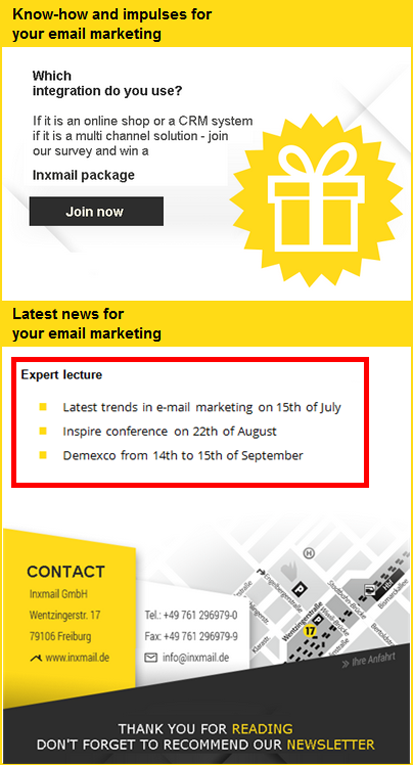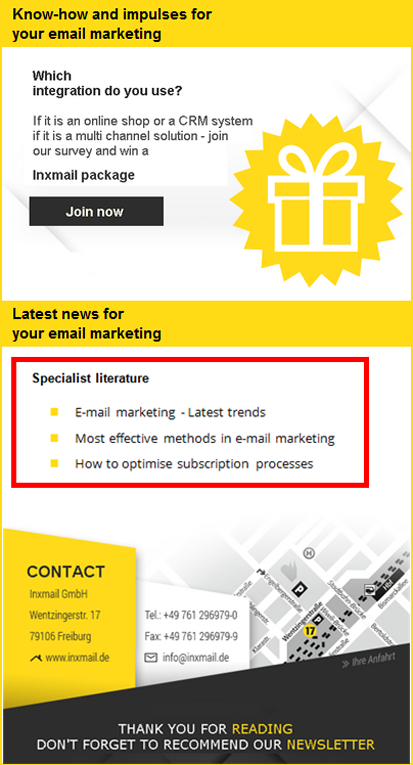|
Details for the example |
|
|---|---|
|
Data source |
XML files |
|
Transformation |
Yes |
|
Personalisation/ |
Yes |
|
Agent |
|
|
Time of the update |
Sending time |
Notes on the example
In this example, two XML files are used as the data source. The recipient attribute information is passed to the data source. Depending on whether the value specialist literature or expert lecture is entered for the recipient, the values from the corresponding XML file are transferred to Inxmail Professional.
Through the transformation, the corresponding XML file is transformed to a table in HTML format and integrated into the mailing.
URL of the data source
https://example.com/content/[$information].xml
XML files
specialistliterature.xml
<?xml version="1.0" encoding="UTF-8" standalone="yes"?>
<xmlinformation>
<information>Specialist literature</information>
<date1>E-mail marketing - Latest trends</date1>
<date2>Most effective methods in e-mail marketing</date2>
<date3>How to optimise subscription processes</date3>
</xmlinformation>expertlecture.xml
<?xml version="1.0" encoding="UTF-8" standalone="yes"?>
<xmlinformation>
<information>Expert lecture</information>
<date1>Latest trends in e-mail marketing on 15th of July</date1>
<date2>Inspire conference on 22th of August</date2>
<date3>Demexco from 14th to 15th of September</date3>
</xmlinformation>Transformation
<?xml version="1.0" encoding="UTF-8"?>
<xsl:stylesheet version="1.0" xmlns:xsl="http://www.w3.org/1999/XSL/Transform">
<xsl:template match="/xmlinformation">
<table border="0">
<tr>
<td><xsl:value-of select="date1"/></td>
</tr>
<tr>
<td><xsl:value-of select="date2"/></td>
</tr>
<tr>
<td><xsl:value-of select="date3"/></td>
</tr>
</table>
</xsl:template>
</xsl:stylesheet> Display in the mailing


